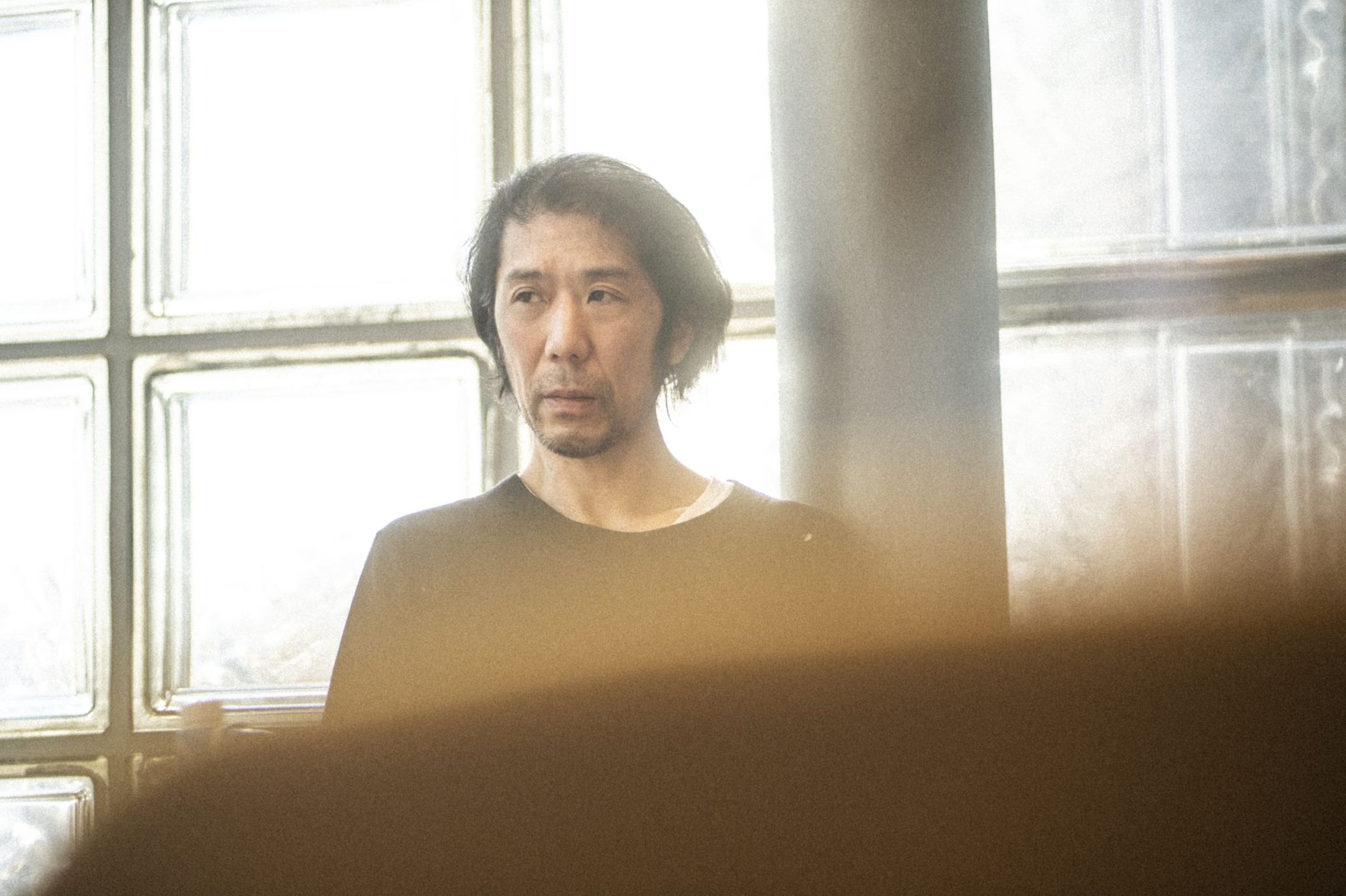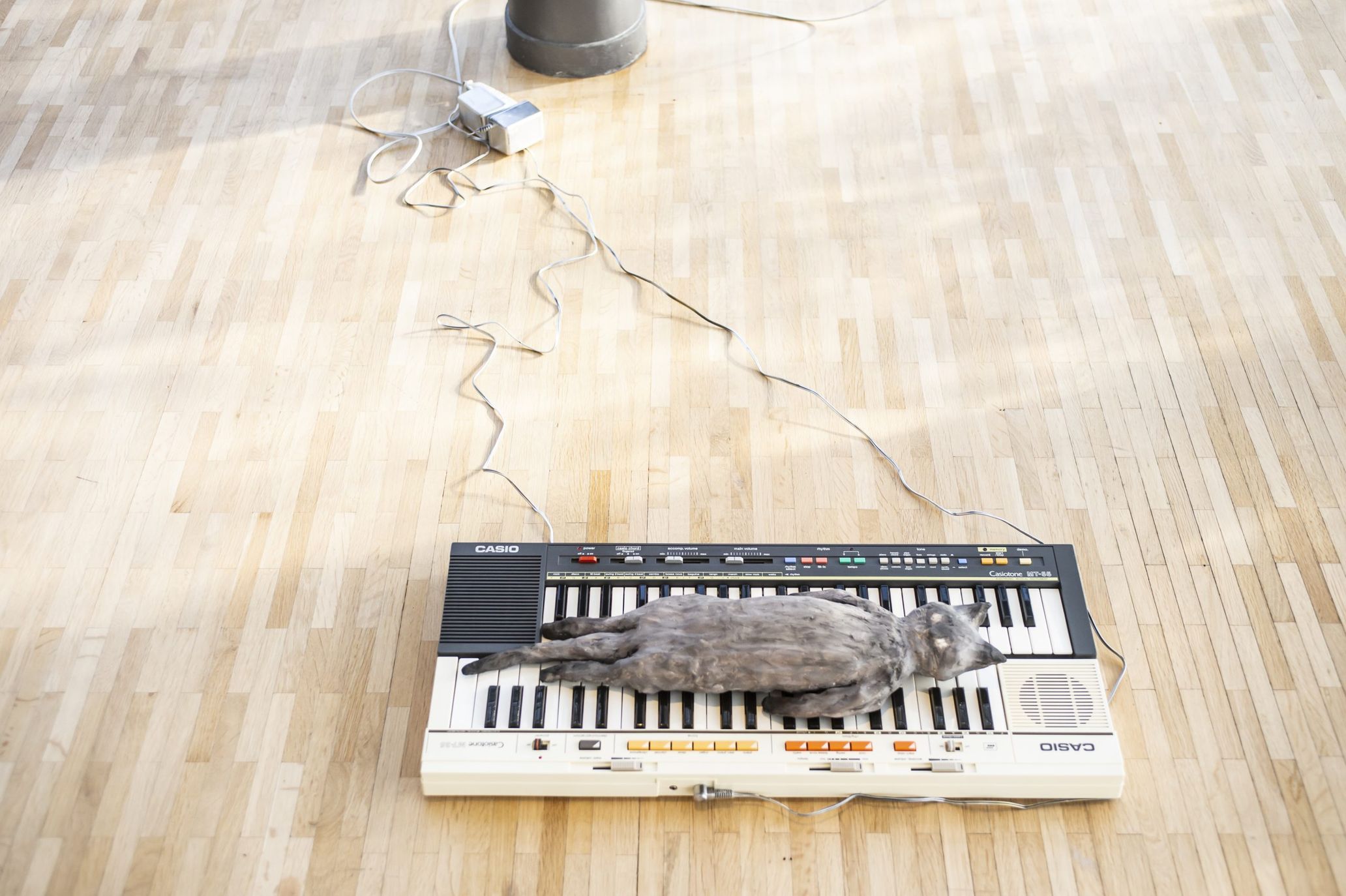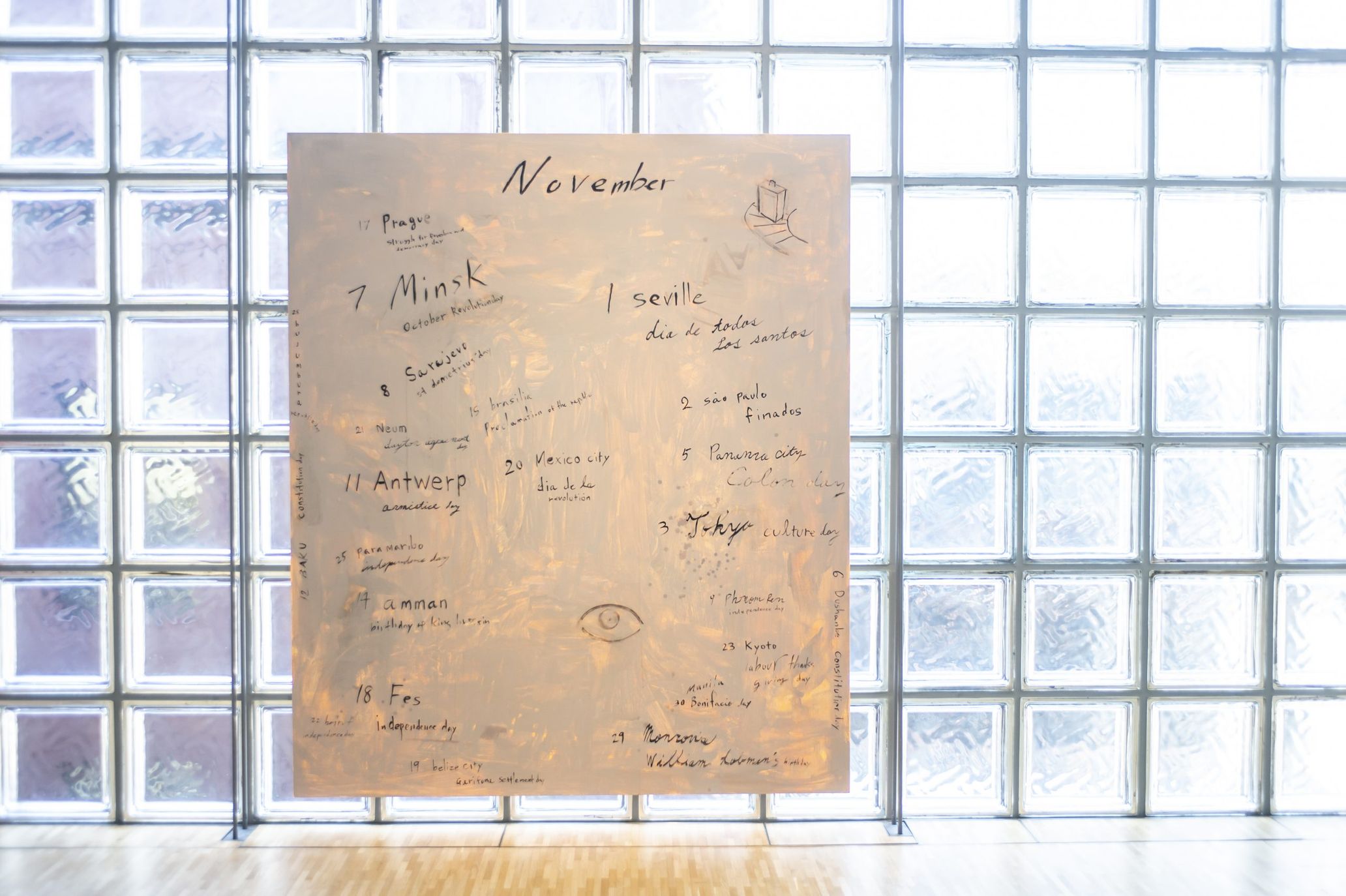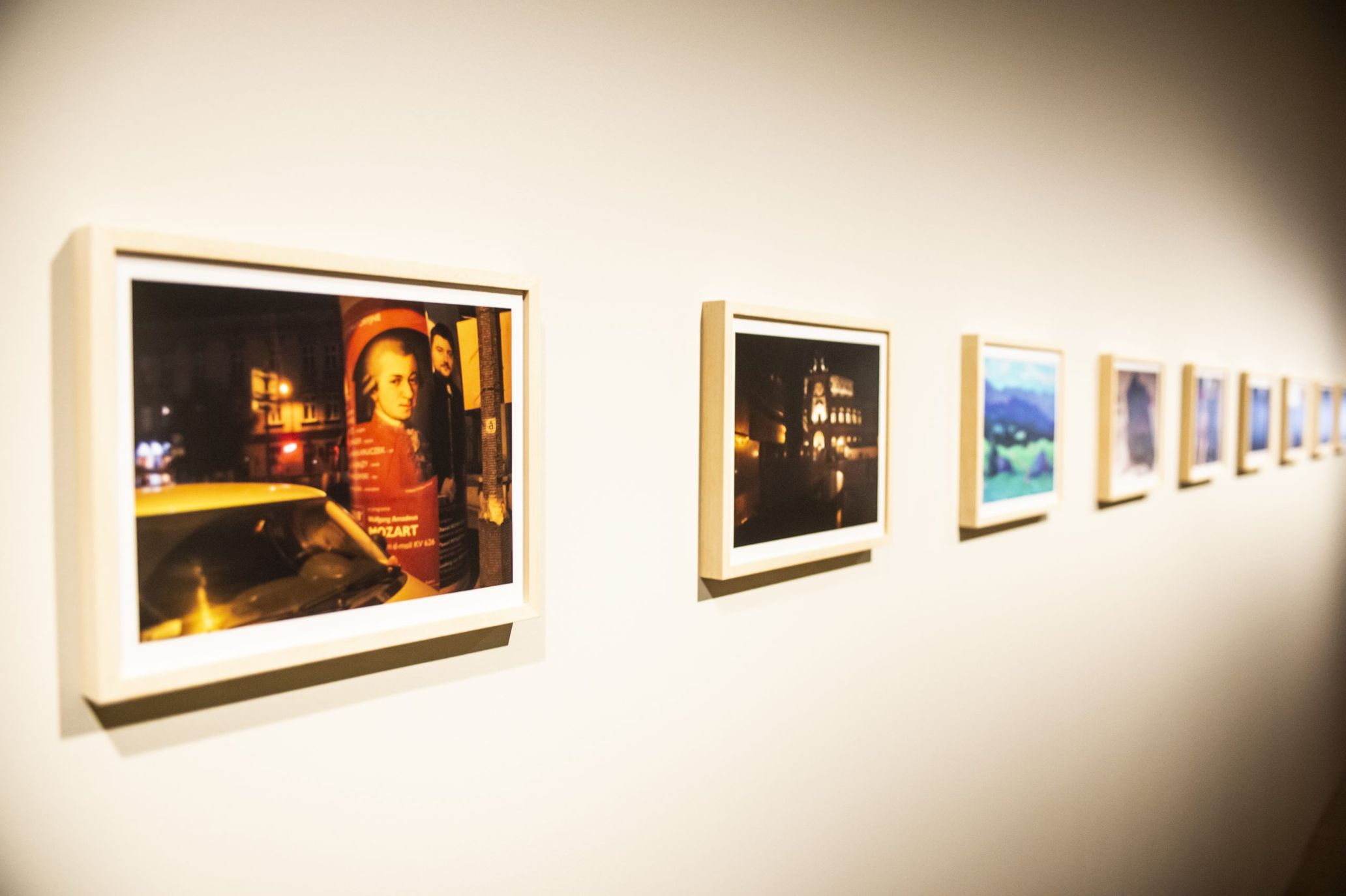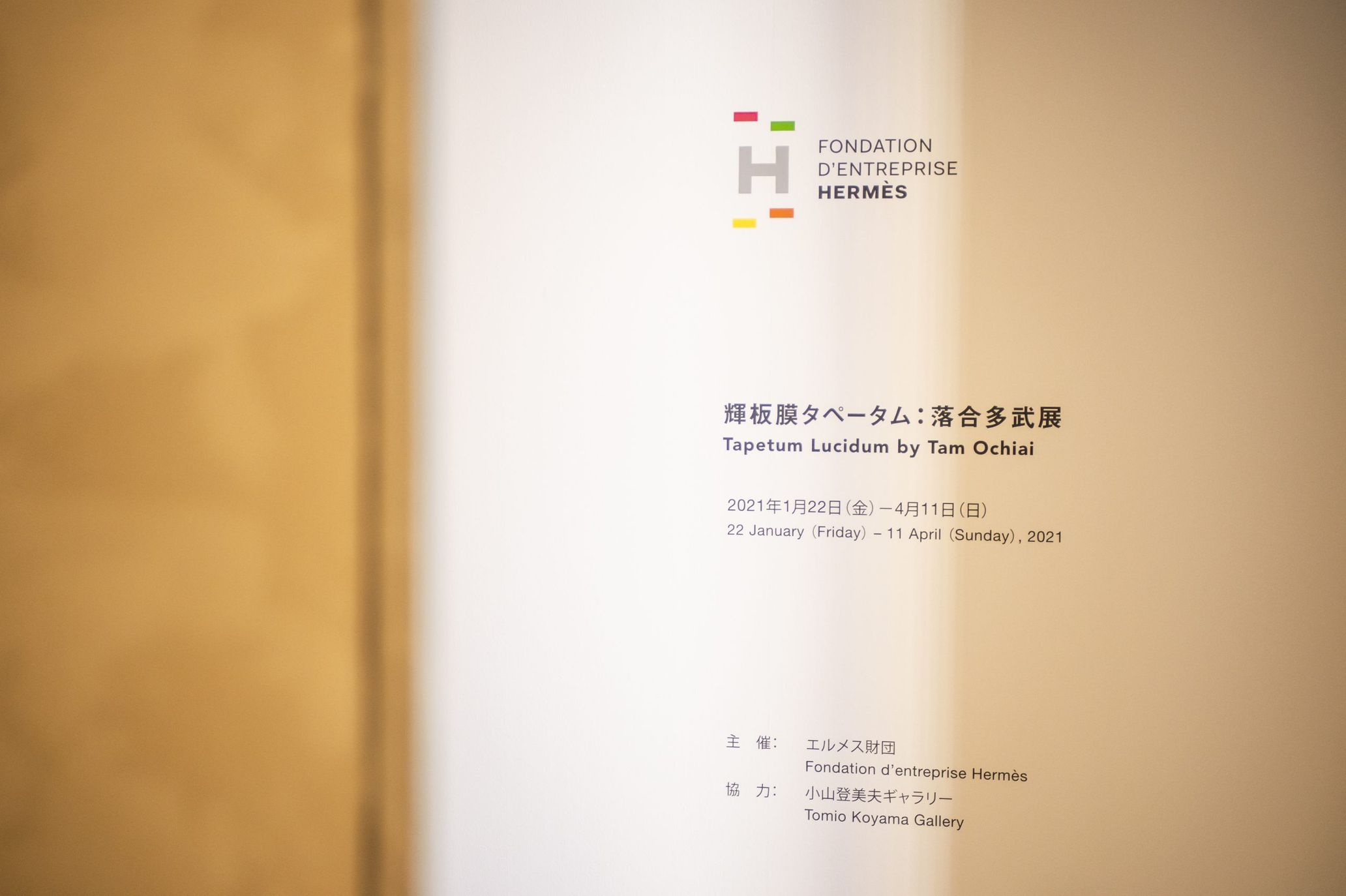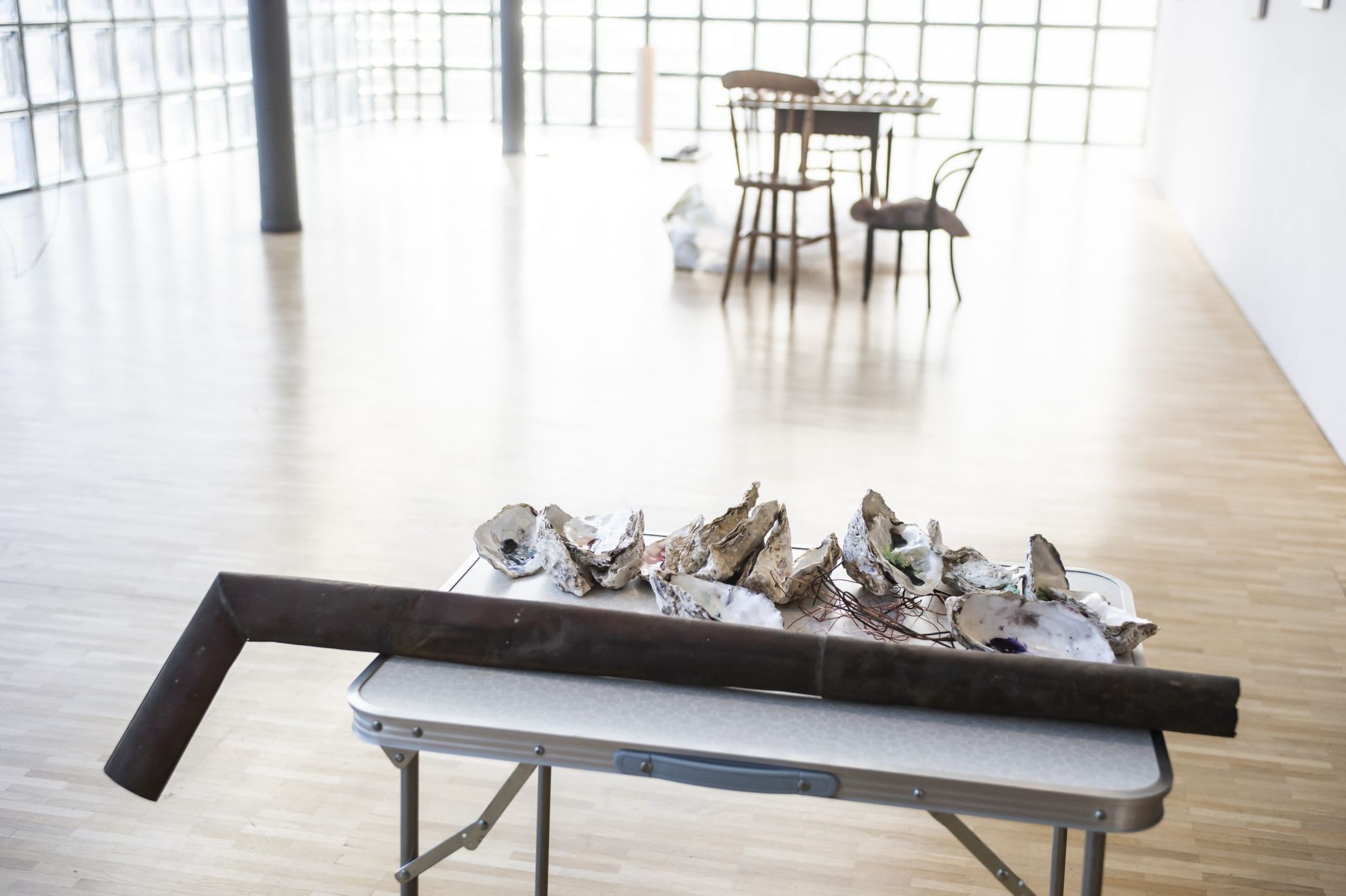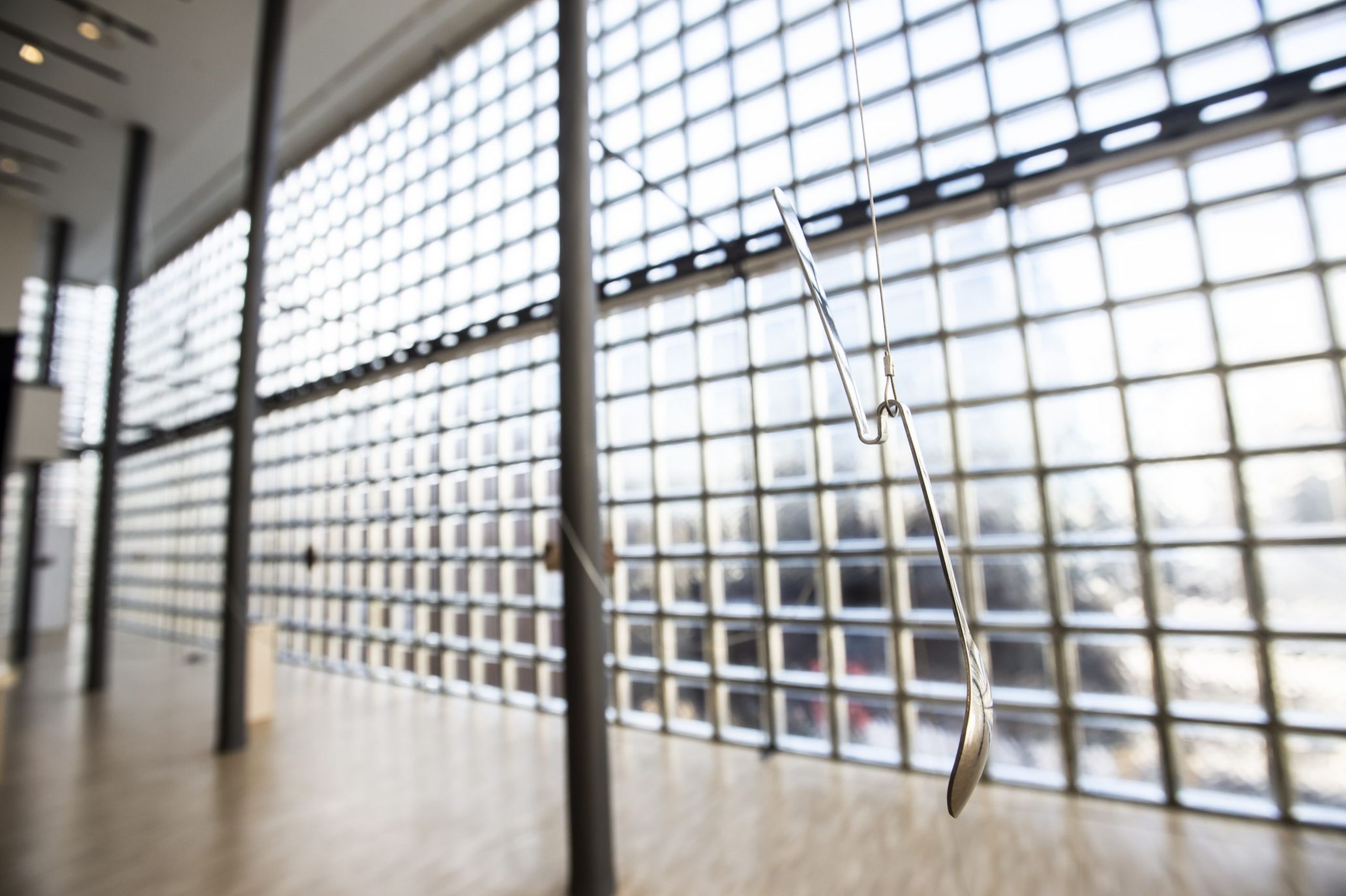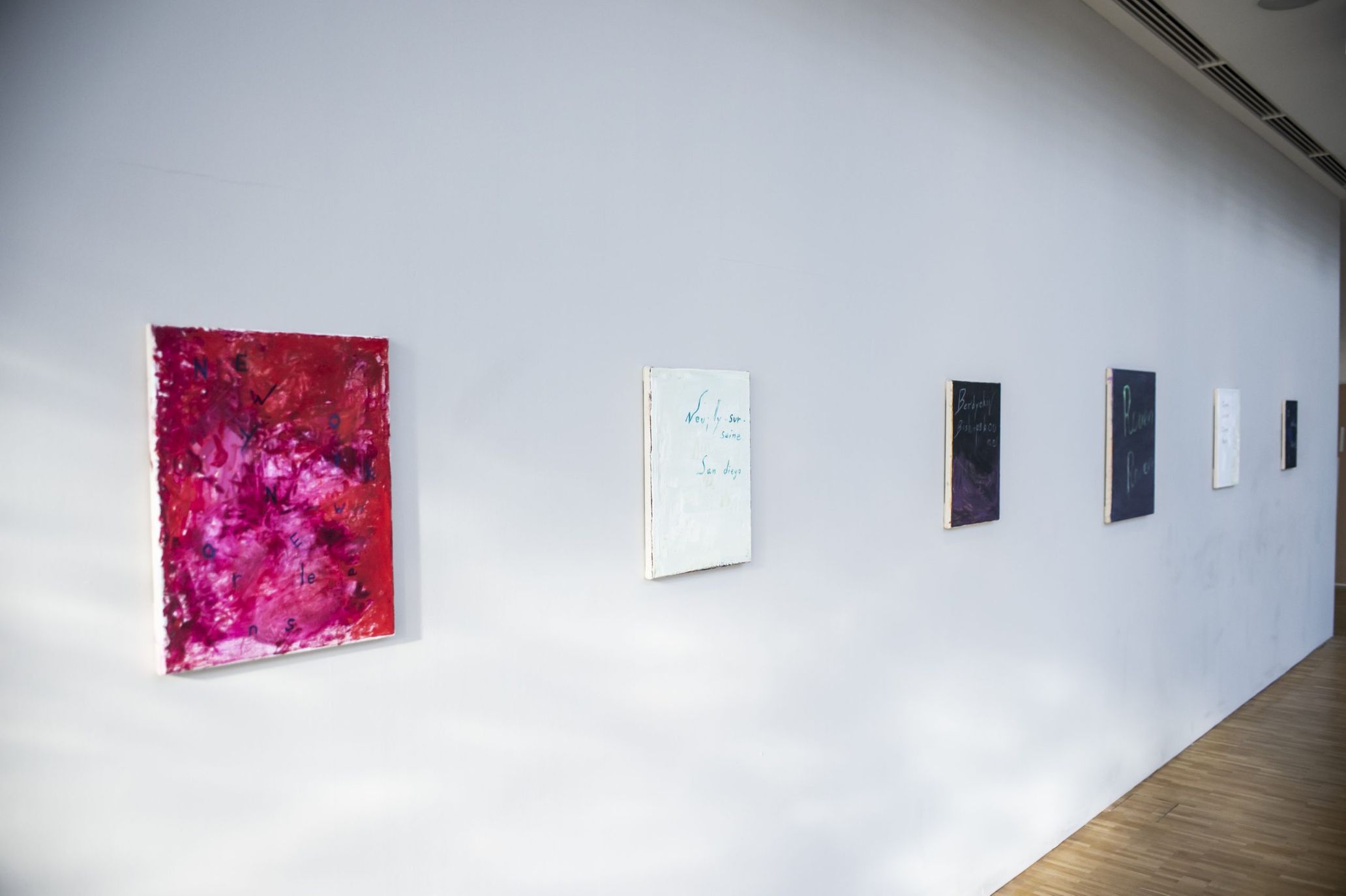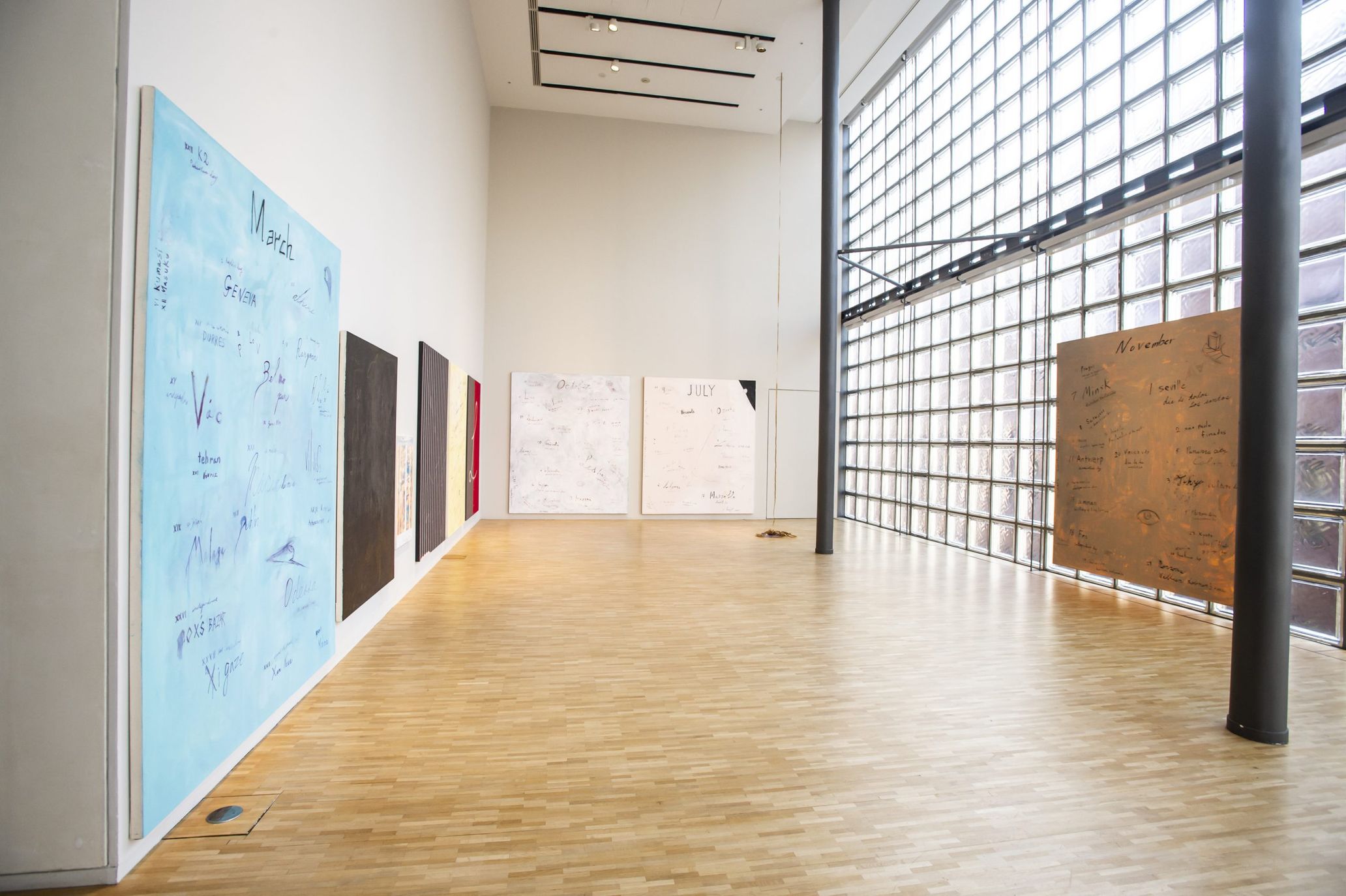Tapetum Lucidum is an exhibition by Tam Ochiai, an artist based in New York. It is currently held at Ginza Maison Hermès Le Forum. Tapetum refers to a reflective layer found in the eyes of nocturnal animals, able to capture the slightest amount of light in the dark. Ochiai’s work is like a cat’s eyes glowing in the dark, reflecting the faintest light, and inspiring the viewers’ free imagination. We interviewed him about his work.
To Exist in a Natural State
Tam Ochiai uses different forms for his work, including painting, sculpture, and photography. The exhibition consists of a series from the past quarter-century including “M.O.;” “everyone has two places;” “Ashtray Sculptures;” “Itinerary, non?;” “Chopin, Op. 97,” and his latest work, “Othello.” It can almost stand as a retrospective on Ochiai’s work, yet it also feels like a grand installation that combines all of his past work. The viewers can wander around in Ochiai’s diverse forms of expression.
The “cat sculpture” is a counterpart to Ochiai’s previous work with the same title. A sculpture of a cat is placed on top of a keyboard, and a cord that extends from the keyboard looks as if it is drawing an organic line in the exhibition space. Ochiai said that the entire exhibition was put into place as if he was making a move on the shogi (Japanese chess) board.
Ochiai said, “I wanted to place everything as if they were in a natural state; for example, the names of places, although the process of doing so was artificial. The cord that looks like a drawing, also functions to play music. But it is ultimately in a natural state.”
In the beginning, there is the natural state. His photos look as if they captured a casual moment, and his paintings look as if they were drawn with careful calculation. There is no way around to explain it, but all of them are in their natural state. Ochiai says, “When you paint, you stop at one point and complete the painting. I think the artist makes that decision because it was a ‘natural’ thing to do for them.”
Drawing as Structure and Idea
Chopin said in his will, that he would like to have his heart transported from Paris to Warsaw where he grew up, after his death. “Chopin, Op. 97”is a series of photos that Ochiai took as he travelled from Paris to Warsaw, imagining that journey of the heart. Ochiai said, “I decided the structure, which meant that I would travel from Paris to Warsaw. What I encountered on the course of the journey happened by chance, or was unexpected. In cinema, there is a category called ‘Structural Film.’ I believe this series was close to that idea.”
In that sense, the idea that decides the structure of the work is what is unique in Ochiai’s work. For example, in “everyone has two places,”he says that everyone was born in one place and dies in another place, which amounts to two places, and he draws those two locations. In “Itinerary, non?”,he wrote down the holidays of different countries over the course of 12 months on his paintings, along with the names of the cities. It created an impossible travel itinerary to follow, if you were to travel to those cities during the holidays.
“In 2008, I wrote a book called note on drawing, and established a hypothesis that my drawings are ideas. I wanted to express time in different ways. For example, in ‘everyone has two places,’ It’s depicted life from beginning to end. I think I can say the same for ‘Chopin, Op. 97.’ As for the ‘cat sculpture’, the cord reflects my idea that it is considered a drawing.”
Ochiai said that note on drawing was like a poem. In the exhibition, at one corner, the viewers can listen to the reading of the book in English, French, and Japanese. It feels as if the sound of the words is cascading down on you, and you become less focused on the meaning of the words.
“This time, I am presenting something that is slightly different from poetry. In the past, when I wrote a poem, a poet asked me why an artist is writing a poem and I didn’t have an answer. However, there are many artists who write texts. As for me, I see my texts almost as part of my art work.”
No Matter Where I am, I am Influenced by the Location
Ochiai’s unique sensibility and creativity were nurtured largely by experiencing the art scene in New York, after moving there in 1990. In the early 90s, when Ochiai was a student at graduate school, Felix Gonzalez-Torres was one of the teachers. Ochiai did not enroll in his class, but says that “He was probably the best teacher.” Torres was not motivated and used to say that he was teaching for money. Ochiai said, “It was a strange place. And this is not about what is good or bad. No matter where I am, I am influenced by the place that I am staying.”
Movement was an element that was often incorporated in Ochiai’s work. His latest work “Othello,” was created in New Mexico last Summer, in the midst of the pandemic. He lived there for a month in isolation. Will the world change onwards? How will that influence Ochiai’s work?
“The world has been changing, but, in a big picture, it might not be changing so much. There are always wars. There were pandemics in the past and there are earthquakes. I don’t think my work will become easier to understand. I was in New York when 9/11 happened, and that did not make my work simple. But, I know that what I do is affected by what I have seen.”
We feel that words are never sufficient to describe Ochiai’s work. Ochiai replied to each of our question thoughtfully and crafted his answers carefully. He also taught us about the magic number. If you multiply 142,857 by 2, you get 285,714, and if you multiply it by 3, you get 428,571……, and the number sequence shifts a little bit. Then, when you multiply142,857 by 7, the number becomes 9,999,999. It’s a magic number. Nobody explain why this happens, but it just happens. Perhaps, Ochiai’s works – which are in “a natural state” – may be just like the magic number that surprises us in a different way.
Tam Ochiai
Born in Kanagawa in 1967, and is currently based in New York. He moved to the United States in 1990 and completed his M.A. in New York University in 1993. His main theme is “drawing is a concept” and he works with a variety of media including drawing, sculpture, video, performance, and poetry. His major solo exhibitions include Itinerary, Non? (Tomio Koyama Gallery, Tokyo, 2019);Tarragon, Like a Cat’s Belly (Team Gallery, New York, 2017); Spies Are Only Revealed When They Get Caught (WATARIUM Museum, Tokyo, 2010). His major group exhibitions include Collection: The Aesthetics of Contemporary Japan (National Museum of Art, Osaka, 2020); Weavers of Worlds – A Century of Flux in Japanese Modern / Contemporary Art (Museum of Contemporary Art Tokyo, 2019); Winter Garden: The Exploration of The Micropop Imagination in Contemporary Japanese Art (Hara Museum of Contemporary Art, Tokyo, 2019, and touring numerous other venues including Japanisches Kulturinstitut, Cologne.)
■Tapetum Lucidum by Tam Ochiai
Dates: January 22-April 11, 2021
Time: 11:00-19:00 (Last entry at 18:30)
Venue: Ginza Maison Hermès Le Forum
Address: 5-4-18 Ginza, 8th Floor, Chuo-ku, Tokyo
Holidays: Le Forum follows the operating hours of the Hermès store.
Admission: Free
Photography Kunihisa Kobanashi
Edit Jun Ashizawa(TOKION)
Translation Fumiko Miyamoto

